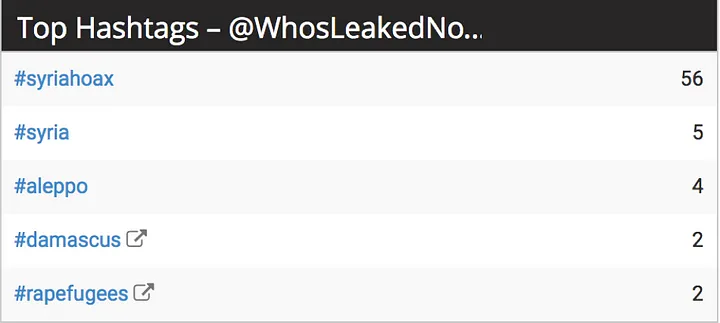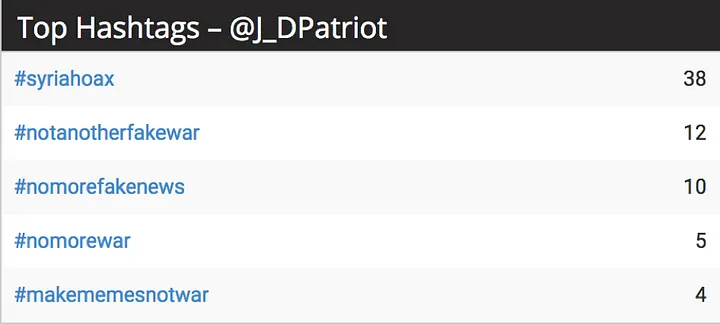How the alt-right brought #SyriaHoax to America
Tracing the “false flag” claim back to a pro-Assad website
How the alt-right brought #SyriaHoax to America
Share this story
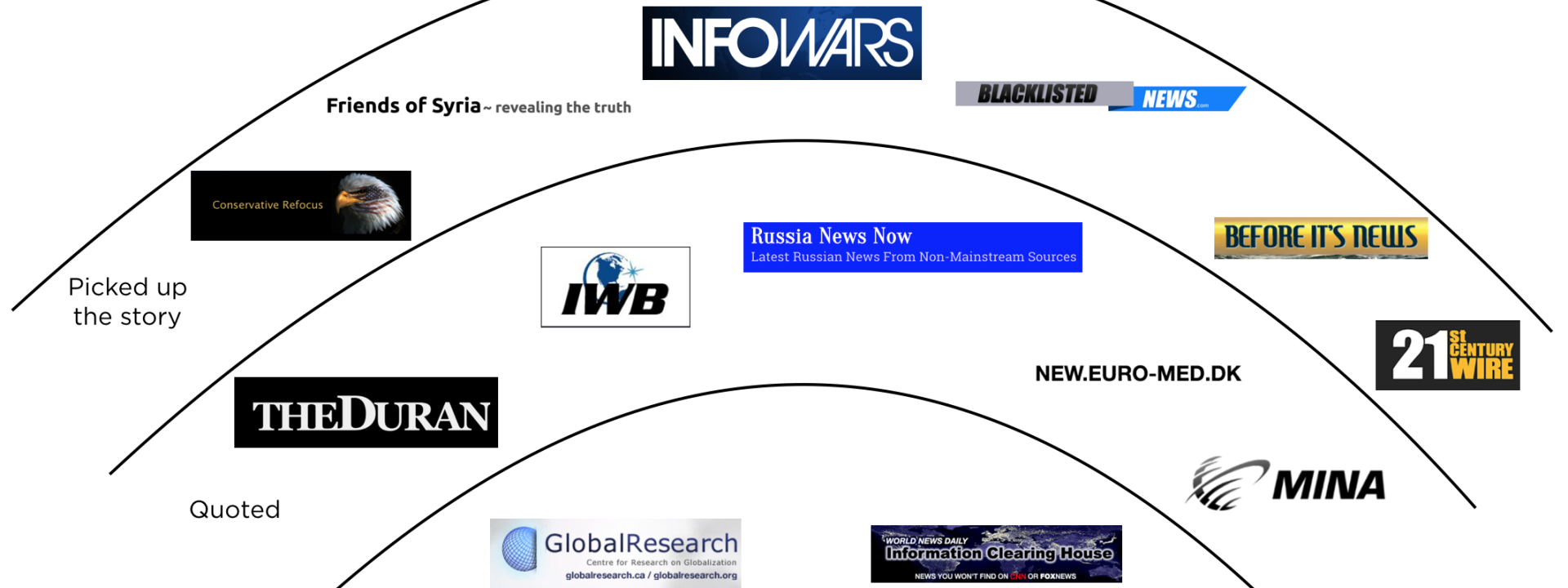
BANNER: Diagram of how the “false flag” claim spread.
US President Donald Trump’s decision to launch strikes against Syria in the wake of a major chemical weapons attack provoked outrage from the far-right groups who were his most aggressive supporters. As rumors of the impending strikes broke, they launched an online campaign claiming that the chemical attack had been a hoax.
The hashtag followed two days of reporting by the so-called “alt-right” — anti-Islam, anti-immigrant, socially conservative and, until the strikes, vociferously pro-Trump — that the chemical attack had been staged.
The DFRLab has traced the origins of the story, and found that the alt-right coverage was based on a report in a propaganda outlet linked to the Assad regime.
Starting in Syria
The chemical attack came at dawn, local time, on April 4. It was widely reported and provoked outrage and condemnation, triggering immediate calls for an investigation. Photographs and videos from the scene showed hideous images of dead children and footage of rescuers, including the White Helmets group, washing down victims.
The same day, website Al-Masdar News, which supports the government of Syrian President Bashar al-Assad, published an article claiming that the story was a “false flag” operation:
“Merely hours after the alleged chemical weapons attack in Khan Sheikhun, supposedly by the Syrian government, holes are beginning to emerge from opposition sources, discrediting the Al-Qaeda affiliated White Helmets claims.”
The article argued that the attack could not have been carried out with sarin gas, as the emergency responders seen in some of the images (including the one in the tweet) were not wearing gloves to handle the victims.
It also quoted a post from an outlet called Orient TV, tweeted by Twitter account @WithinSyriaBlog, which spoke of covering chemical attacks in the area the day before the strike.
Finally, it highlighted, and underlined in uneven ink, a tweet from a doctor on the scene who was offering to give interviews:

The article was written by Paul Antonopolous, the deputy editor of Al-Masdar news and a self-described frequent contributor to Kremlin state media channel RT. A search for his name on RT’s website showed that he has been interviewed twice.
Al-Masdar news is owned by Leith Abou Fadel, an Assad loyalist with close ties to the regime. It serves as an unofficial government outlet, and has repeatedly attacked regime critics and witnesses to regime atrocities, notably the White Helmets.
Picked up by the alt-right
Over the next two days, the al-Masdar piece was picked up by a number of pro-Kremlin and anti-Western sites.
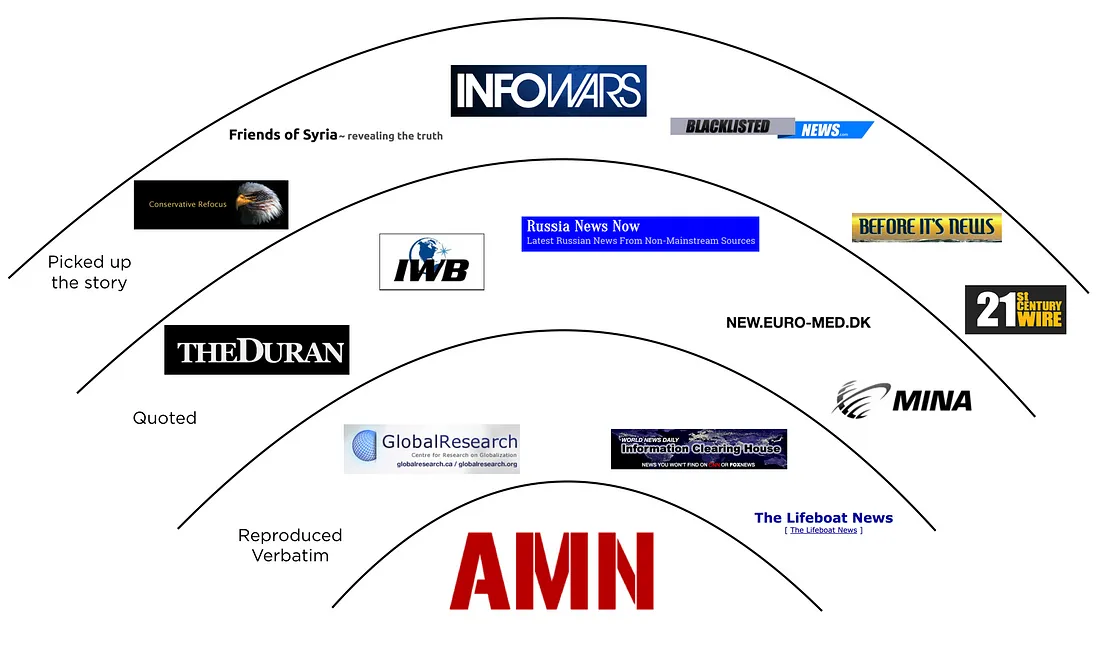
It was reproduced verbatim by at least three conspiracy sites: globalresearch.ca, informationclearinghouse.info and The Lifeboat News. A number of pro-Kremlin sites known for their use of false reporting quoted it at length. These included The Duran and The Russophile (also known as Russia News Now), together with conspiracy site Investment Watch Blog.
A third group of sites wrote their own reports, but very largely followed the Al-Masdar arguments. These included 21st Century Wire and Before It’s News, both of which ran a video repeating the claims and using the same imagery.
The DFRLab has already identified a number of these sites in connection with deliberately false reporting: globalresearch.ca, Russia News Now and Before It’s News all posted a fake story on “3,600 US tanks” in early January.
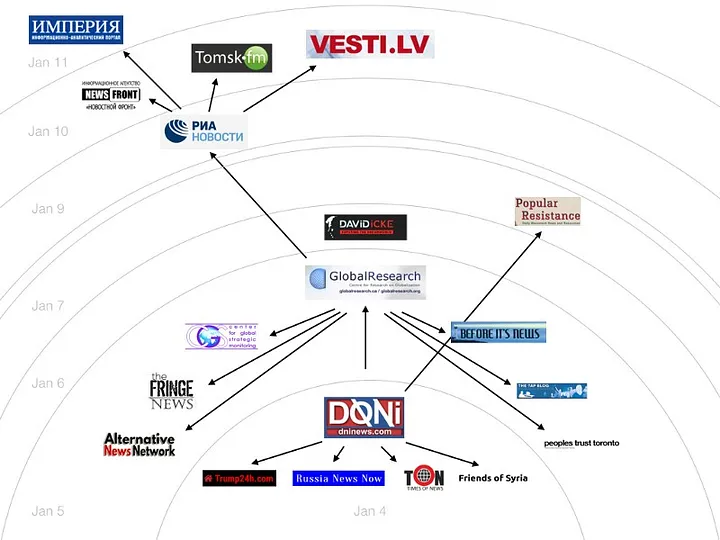
The most influential pickup came on April 5, when US-based conspiracy site Infowars ran its version of the story. Infowars is a highly influential site among the “alt-right” movement in the US; its leading light, Alex Jones, has over 600,000 Twitter followers.
Infowars was one of the main outlets to publicize the fake “Pizzagate” story which claimed that figures close to Hillary Clinton were running a pedophile ring from a pizzeria in Washington, DC, a falsehood for which Jones was eventually forced to apologize. Throughout the US presidential election campaign of 2016, Infowars supported Trump.
On April 5, however, Infowars ran a long article claiming that the White Helmets — which it presented as funded by billionaire George Soros — were in fact behind the attack and saying that the attack had “all the hallmarks of a false flag”.

The article made the same claims, and used the same sources, as the al-Masdar story, reversing their order so that the Orient TV post came first:
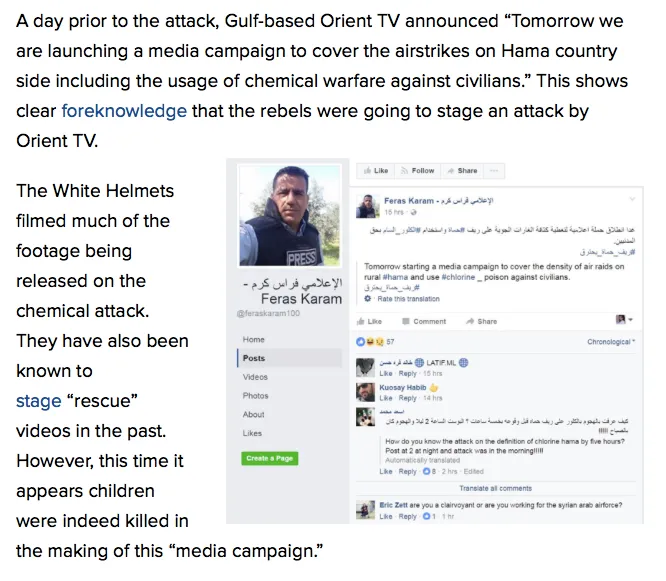
This was followed by the tweets from the doctor:

The red underlining is identical with that posted by Al-Masdar:
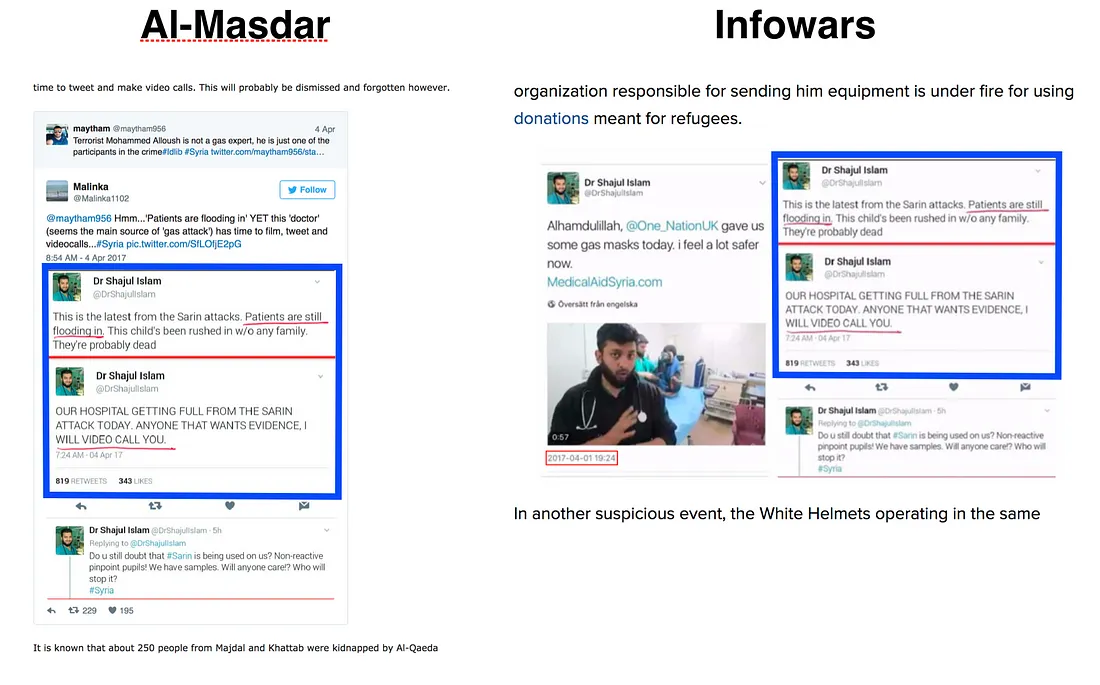
Finally, the Infowars piece reproduced the image of the White Helmets used by Al Masdar:

It is beyond plausibility that Infowars should have independently hit upon exactly the same sources, images and arguments. The only reasonable explanation is that it was based on the Al-Masdar article — either directly, or via an intermediate site such as globalresearch.ca.
Spreading the “hoax” online
Infowars did more than simply post its version of the Al-Masdar story online: it also tweeted it, and was retweeted 300 times.
Jones also tweeted it, with over 400 retweets.
This amplification of Al-Masdar’s story was far more effective than the Al-Masdar original, which was retweeted 69 times.
However, the most influential Twitter activity came from another source. On the day of the attack, a twitter account called @magicpoledancer posted a tweet warning Trump against intervention and launching the hashtag #SyriaHoax:
This was the first use of the tweet:
The @magicpoledancer account was created in March 2017. It only started tweeting on April 4, and the user has only tweeted about Trump’s policy towards Syria. Although the account has only 14 followers, its tweet got 109 likes and 92 retweets. The bio of @magicpoledancer reads: “Capitalism and communism are two sides of the same coin”, which is a famous quote by Russian author Bakunin.
@Magicpoledancer added further tweets on April 7, but with little pickup:
The hashtag began to trend until April 6, when it was popularized by another conspiracy and disinformation user, Mike Cernovich:
It is unclear whether Cernovich drew the inspiration for his hashtag from @magicpoledancer; he could have invented it himself. It is also unclear what he based his “hoax” conclusion on. However, he is a fervent admirer of Alex Jones:
Moreover, on April 5, the day of the Infowars publication, he confirmed that he was due to meet Jones soon:
It is therefore likely that the Infowars story was at least part of the inspiration for his tweet.
The tweet rapidly went viral, boosting the hashtag into the trending lists. However, much of its initial viral appeal appears to have come from suspiciously hyperactive accounts that tweeted it dozens or hundreds of times in the space of a few hours.

All together, these forty accounts were responsible for just over 3,000 tweets between 16:00 and 22:00 UTC on April 6. The hashtag as a whole generated 20,000 posts over that period: in other words, forty accounts provided 15 per cent of all its traffic.
It is also apparent that, to spread the hashtag, some sleeper bots were activated. For example, @dr_trumpenstein was created in June 2016. In total, by April 7 the account had tweeted 269 times, but it had used #SyriaHoax 155 times, which means almost 60 per cent of its tweets were posted to promote one hashtag. (In the evening of April 7, all but ten of its tweets were deleted.)
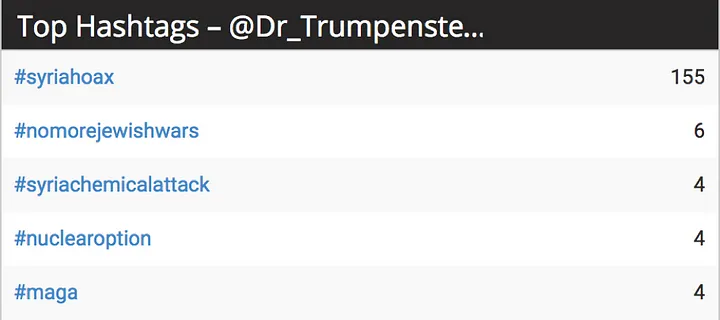
Similarly, the @whosleakednow joined Twitter in September 2014. By April 7, it had posted posted 243 tweets, of which 56 used the #SyriaHoax hashtag.
Another account, @J_DPatriot first appeared on Twitter in February 2017 and had posted 314 tweets by April 7. Of those, 38 contained #SyriaHoax:
The hashtag owed its success largely to Cernovich, who is an influential tweeter in his own right. However, part of that success was due to bots.
Conclusion
The Syrian regime’s reaction to the chemical attack is no surprise. It has consistently denied all accusations of atrocities, and accused its critics of false claims, as documented in the Atlantic Council’s report “Breaking Aleppo”.
What is noteworthy is the way in which the regime’s response, launched on a site which has repeatedly amplified Assad’s messaging, was translated rapidly and directly into coverage on alt-right websites, most obviously Infowars.
In the process, the alt-right sites used the same arguments, backed up with the same evidence, and taken from the same sources, as the Al-Masdar original. This was not a case of the alt-right arguing on behalf of the Assad regime as much as amplifying it.


